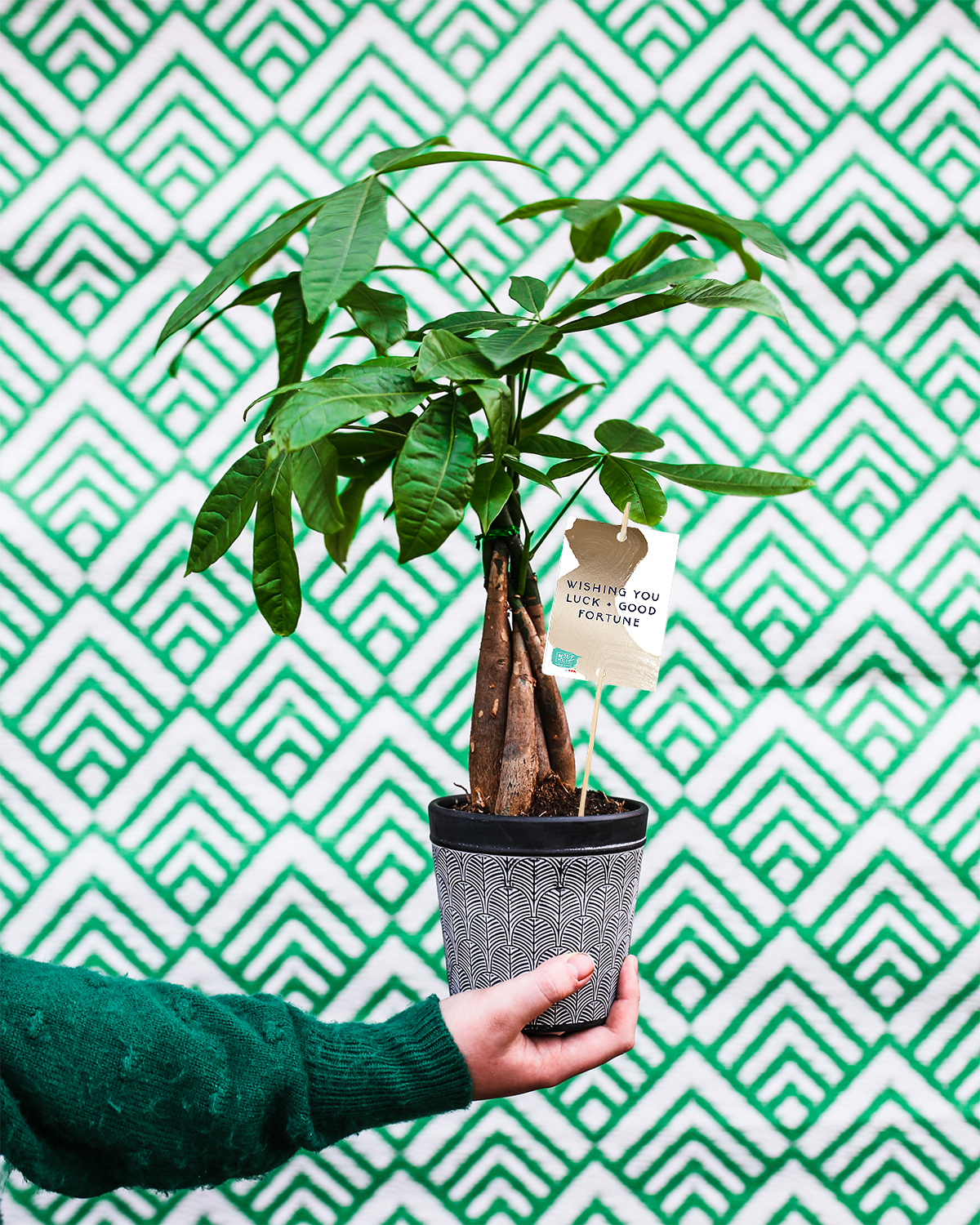Why is the Money Tree Plant Lucky?
There are so many things to love about money tree plants. These cute little trees have a neatly braided truck, gorgeous green foliage, and are super easy to care for. On top of all of those great qualities, did you know money trees are also considered lucky? Let’s explore the story behind the plant’s lucky origins.
Grow Your Own Luck
The legend of the money tree plant dates back many centuries ago to a poor farmer in Tawain. The farmer noticed a unique plant growing in his field that turned out to be the Pachira Aquatica plant. He decided to grow and sell these plants to earn money, later making him a very wealthy man. It is said that he named the plant the “money tree” because of the wealth and good fortune it brought him.
Whether this lore is true or not, is up for debate. Other sources say that the money tree as we know it originated only a few decades ago when the technique of intertwining the stems of the Pachira Aquatica plant became popular. This braided technique is said to lock in the good luck of the plant.
Rooted in Symbolism
The money tree plant has gained cultural importance in Asia where the five leaves on a money tree branch symbolize the five fundamental Feng Shui elements. Having a money tree plant in your home is said to bring good luck and positive energy to the owner. That is why the money tree has become a popular gift item for many occasions where the sentiment of luck is appropriate. Placing the plant in the “money area” of your home or space, such as an office or place of business is thought to bring prosperity and wealth!
More Leaves, More Luck
Most commonly, each stem on a money tree plant has five leaves on it, sometimes six. Occasionally you may find seven leaves on one stem. Since this is quite rare, it is rumored to bring extra luck to the owner!
Whether you are in search of luck or just enjoy an attractive, easy-care plant, the money tree will be a welcome addition to your home! Find Max & Miles Lucky Money Tree Plants at your local HEB this week and bring home a little luck in honor of St. Patrick’s Day!
For more information and money tree care tips, check out our blog post on Common Money Tree Questions and Answers.








